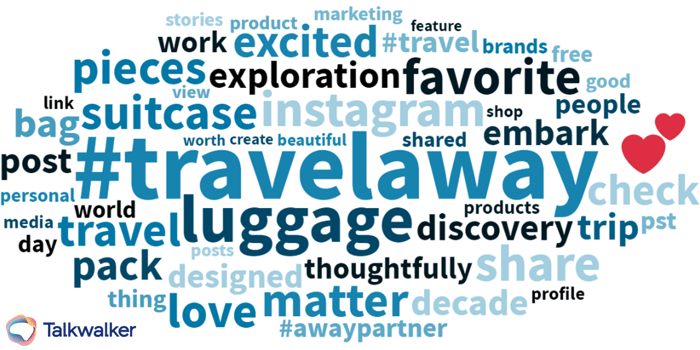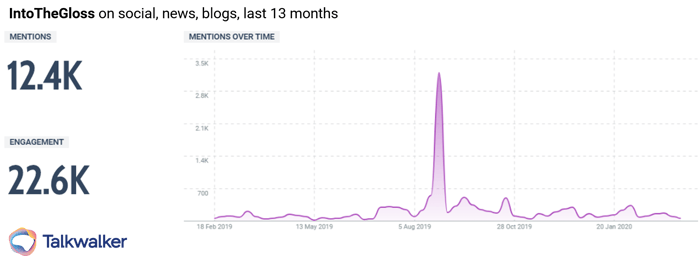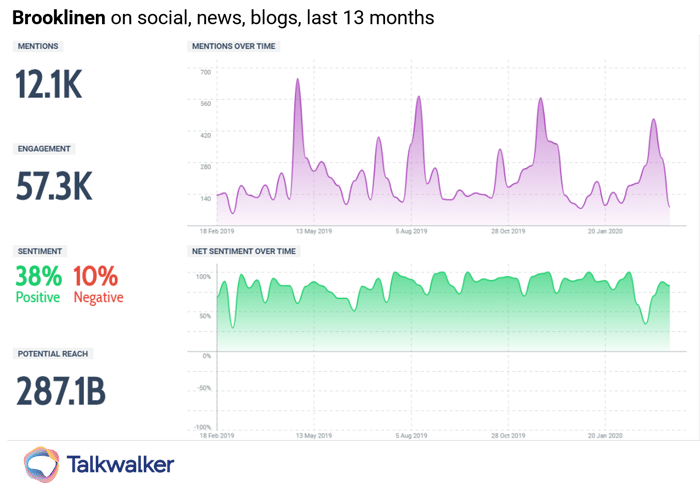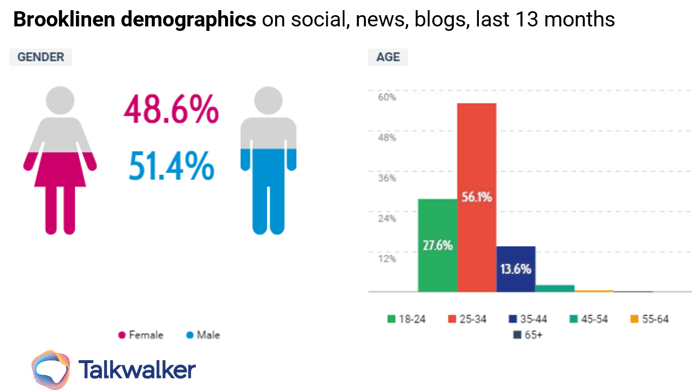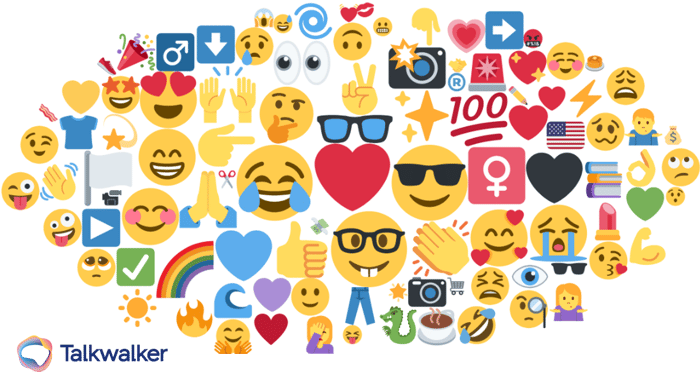Check your social media strategy
Customers buy online. More and more. Ecommerce accounts for 12% of all US purchases by end 2019, with a fast-growing trend.

Growing share of ecommerce sales in the US market
The ecommerce ecosystem is structured by a power triangle where brands need to find their spot in the game:
- The new online marketplace: leading online marketplaces such as Amazon and Alibaba, which are often offering their own generic brands besides endless contenders.
- Classic companies such as Unilever and Nike, playing a dual game by trying their own direct-to-consumer approach with limited editions on their own corporate website or via online retailers.
- New digital native vertical brands with a fresh tone of voice, a new story, innovative products that are meant to resonate within Millennials’ needs and desires.
At first glance, DTC seems to only have advantages: profiting from the web’s unlimited reach, its automated personalization, dynamic pricing methods, quasi supersonic speed to market and low capex as companies don’t need to store tons of goods at thousands of warehouses. In the end it’s all about economies of scale.
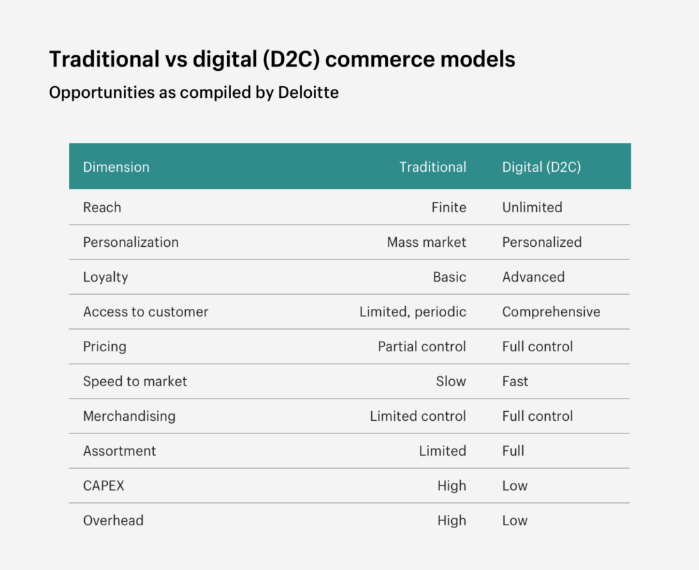
Traditional vs D2C business models
One of the biggest and often forgotten advantages of the DTC model is consumer data. By cutting out the middleman, big-box companies and new niche innovators have direct access to consumer voices and insights. Collecting audience demographics, social profiles and chatbot records gives companies unprecedented tools to personalize and monetize their customer relationship. AI-driven social analytics solutions can help to turn this first-party data into actionable insights and new product ideas.
Turn your customer data into actionable insights now
But...there’s always a but. 2020 has seen many stars fading:
Outdoor Voices’ co-founder Ty Haney had to step down early 2020. The company, that offers Mmillennial style muted pastel at leisurewear, was successful with a creative hashtag campaign #DoingThings.
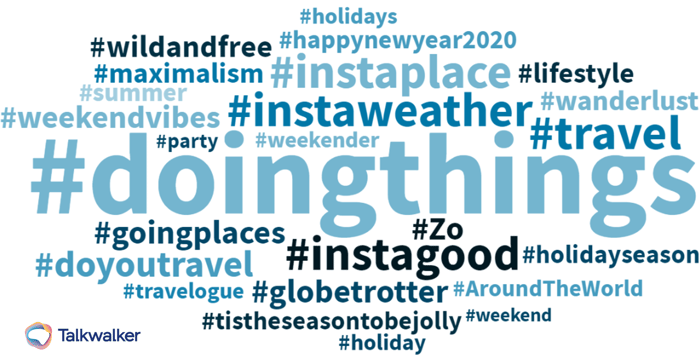
Outdoor Voices’ #DoingThings hashtag generated creative engagement
DTC hero Brandless, which started in 2017 by selling a vast choice of groceries and home goods at a flat price of $3 each, closed business early 2020 after being praised as a Target contender.
Brandless tried to sell $3 staples to hipsters
Building top-of-mind retail names such as Macy’s took ages, building monumental brands such as Coca-Cola even longer. Beyond fancy packaging, well crafted dog-and-baby-empowered Instagram pics, VC cash-burning paid ad campaigns on Facebook and sleek websites, DTC founders are slowly figuring out that being visible on social and being profitable is a very tricky combination these days. Paid ads are the new rent, and customer acquisition costs are rising.
Free Digital Marketing Strategy eBook
Social media is key. 61% of all D2C brands will tell you that social media is their top acquisition channel. So better have it right.
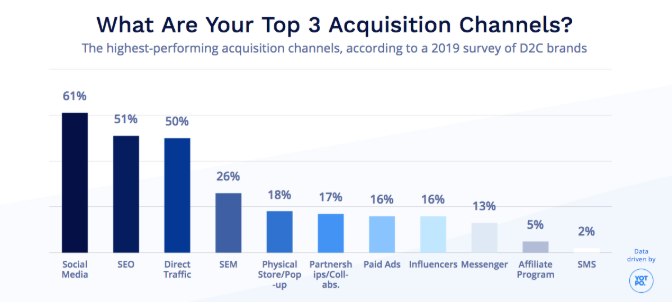
Let’s have a look at the very best DTC practices on social media. Who is in to stay and why?
ThirdLove - 100% women centricity
ThirdLove is a data-driven lingerie start-up that uses tech to perfect its customer experience. They are cleverly targeting underwear consumers that don’t want to follow Victoria’s Secret’s pushy brand mentality but are looking for comfy, beautiful and fitting apparel.
ThirdLove’s main social media approach is authenticity by showing “real” real women and focusing exclusively on fit, women’s main pain-point when purchasing a bra as the brand says.
uM have ya’ll seen @ThirdLove????? pic.twitter.com/loHeIXSKJ7
— (@juliaglimwick) April 3, 2019
ThirdLove is praised on social for their real product visuals
There’s nothing better than a brand fight on social: ThirdLove’s love-hate relationship with Victoria’s Secret is integrated in the brand’s content strategy, further sharpening its women-first brand status.
View this post on InstagramA post shared by ThirdLove (@thirdlove) on
ThirdLove’s full-page response to Victoria’s Secret in the New York Times was used by the brand to elevate its cult status
Key learnings
- Focus on inspiring authenticity and true customer pain-points to establish a strong and relevant USP for your brand on social
- Attacking legacy brands is an option if you have a stable and loyal fandom
Away - the aspirational lifestyle luggage brand
As Conde Nast Traveler would say, “Away made a relatively boring necessity into an enviable statement piece at an affordable price”. They managed to make people look at you when you take your Away bag off the luggage belt.
Away managed to add fashionability, lifestyle, and personality into a travel commodity, with a medium price model.
Fueled by polished user-generated posts, influencer written travel-tips books and an own brand-agnostic online magazine about the world’s most remarkable places, they created a unique emotion around their fancy suitcases and bags, perfected with their straight to the point #travelaway hashtag campaign.
Positive emotions around Away’s #TravelAway hashtag campaign on social media
As we embark on a new decade of exploration and discovery, I am super excited to share my new luggage collaboration with @away. No matter where your travels may take you, pack your favorite pieces and do it in style #TravelAway #AwayPartner pic.twitter.com/jsegLwOqNV
— Serena Williams (@serenawilliams) February 3, 2020
Sports and travel influencer Serena Williams is an Away addict
Key learnings
- Besides the product, focus on how you can nourish emotions around the product to make it special and desirable, especially on social media
- The more your brand is in a commodity segment, the more unique user-generated-content can leverage your brand impact, as a broad base of consumers can relate to the situations (travel experiences for Away).
Glossier - the generation Instagram beauty brand
Turning a beauty blog into a brand - it sounds like a marketing fairy tale and it is.
Emilie Weiss, a former Vogue fashion assistant, turned her personal beauty blog into a millennial-fit beauty label.
She simply used the tools at hand: her own story and credibility as a beauty expert, giving the brand a unique tone and authenticity, cellphone-curated product visuals with no Photoshop effects, boomerang visuals on social to trigger interest, and a first crowd-invented product that ignited stardom: Milky Jelly Cleanser.
View this post on InstagramGood morning. Glossier.com is now live!!!! See what we've been up to. ❤️✨✨
A post shared by Into The Gloss (@intothegloss) on
IntoTheGloss, Glossier’s original blog, has a strong 836k followers base, an industry first
The brand’s original blog features products from all competitors. Below’s social media share of voice report showcases that the blog’s biggest peak in mentions came from an artist influencer post mentioning a competitor. This enhances the blog’s credibility and the mother-brand’s authenticity. The Glossier brand does not fear their competitors but considers them as neighbors with another concept and target group.
IntoTheGloss social media share of voice
Feeling a bit romantic with @IntoTheGloss https://t.co/ZXvcoXpsYn pic.twitter.com/gDTutzS8ah
— BANKS (@hernameisBANKS) August 31, 2019
Glossier is also heavily hyped by its users who love to share the products’ effects with short videos.
Get your data-driven buyer persona template
glossier lip gloss pic.twitter.com/rE4eKyioWO
— n (@stylecataIogue) November 4, 2019
Glossier customers love sharing their use cases on social media, generating engaging content
Key learnings
- Have a unique and credible founder’s story to explain why you know what matters in your segment
- Start with an inspiring vendor-agnostic blog to create a fan base
- Let your passionate customers tell your tremendous brand story with engaging social media content
Brooklinen - the internet’s favorite sheets
Before Brooklinen, sheets were a women’s thing. Now, even men can buy sheets without screwing it up.
The NYC Brooklyn based online bedding and luxury sheets seller founded in 2014, started its business with bloggers and influencers which they asked to write about their new sheets.
Since then, targeted Facebook ads, Instagram stories, polished outdoor advertising & the whole classic DTC spiel has followed, with video being its strongest hit in terms of mentions on social media.
By partnering with the Chatwins, an internet celebrity family with 702k subscribers showcasing their grand family lifestyle and cozy interiors, they hit gold in terms of engagement.
The Chatwins video featuring Brooklinen sheets and bedding articles generated 199,438 views for their products in a “perfect US family” setting
Brooklinen managed to generate social media engagement with strong positive sentiment, as shown in below’s sentiment analysis.
Brooklinen generates nearly exclusively positive sentiment on social media
Demographics analytics show us that Brooklinen has a gender equilibrated audience, with a slight tendency to males (51.4%) and an interesting audience age emphasizing the 25-34 years bracket, a perfect audience as it is a classic "Dual Income, No Kids" group of prospects that needs to buy their sheets on their own for the very first time.
A well balanced social media audience for Brooklinen
Key learnings
- Introducing a gender-neutral communication style in specific industry verticals allows you to reach hidden targets, such as masculine sheet buyers for Brooklinen
- Use video testimonials and relatable product placements in influencer videos for nationwide impact
Warby Parker - socially conscious designer glasses at affordable prices
Warby Parker’s founders cracked the US eyeglasses monopoly by circumventing traditional eyewear shops by selling online, by producing themselves without big brands...and by telling a great story on social media.
Warby Parker is nowadays the US gold standard for a successful go-to-market DTC strategy.
Many had tried to offer cheap glasses, but when you add some meaningful purpose (buy one pair and offer one to people in need) and let consumers try their new glasses at home for free (“Pick 5 frames to try on at home (it's free!)”).
Warby Parker cracked the scale nut by adding a powerful CTA to their free at-home trial pack, inviting customers to share their new eyewear visual on social media while adding #warbyhometryon.
#WarbyHomeTryOn gives customers the power to showcase their new glasses on social media
Everyone’s a bit frightened to wear new glasses. Getting social acclaim turns this awkward moment into a kind of catwalk experience, thus reinsuring customers while creating trustworthy user-generated content and engaging brand buzz.
Glasses, love, and happiness are emojis associated with the Warby Brand on social media
By giving customers the possibility to try on new models with augmented reality (AR) on their mobile phones, the company created a real tech hype for the brand. The social media video featuring the new virtual try-on feature generated 27,000 views so far.
Warby Parker’s Virtual Try-On—a new tool located in the latest version of their app
Key learnings
- Let your consumers be your ambassadors by turning their purchase into a true and engaging lifestyle experience
- Associate your brand with a purpose customers can check on social media - buying glasses for those in need makes more sense than planting trees
- Be technologically savvy as you speak to digital natives, by using new AR technology as a sales technique
Download free content strategy template
Quip - a toothbrush goes online
Quip is an NYC born designer toothbrush delivered on a subscription basis every three months. Its initial success came from targeted Facebook ads and intense outdoor advertising in urban areas.
Quip’s target audience are educated design-oriented social media savvy Millennials and the brand profits from the new hype around bathrooms turned into social media stages.
Instagram’s visual-first approach is key to the brand’s design showcase.
Quip’s easy tone of voice and polished look leads to engagement with the right audience
The brand works with many lifestyle influencers but relies mostly on edgy product “nature mortes”.
View this post on InstagramA post shared by Vanessa Fitzgerald Wellness (@veeshoney) on
Quip recently pivoted to a YouTube referral program, jumping on the powerful video marketing bandwagon, which makes sense as by 2021 80% of all social media content will be video.
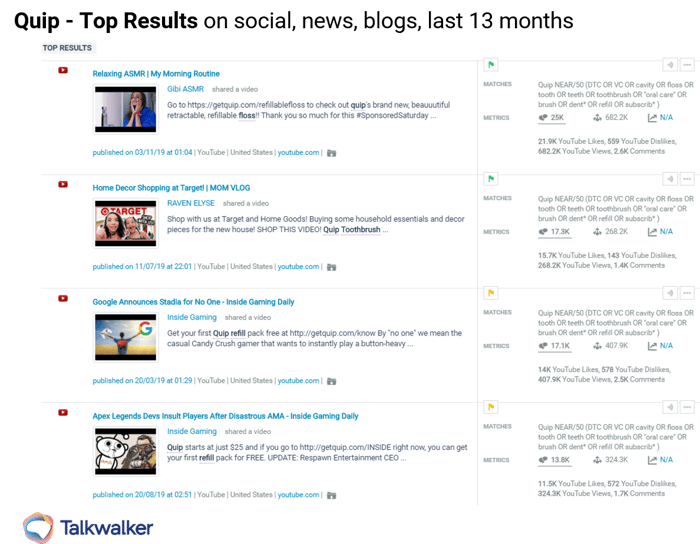
Quip’s most engaging results on social media in the last 13 months are mostly generated by YouTube videos
Key learnings
- If your product design is high-end, use the full Instagram capabilities by telling true stories, authentic “daily life” user-generated content and inspiring day quotes to be remembered.
- Include video referral into your strategy as you can target different target groups with specific yet engaging content(gaming, home & living, travel,...)
Rothy’s - the sustainable stylish shoe brand
Shoes - and now bags - made of a proprietary 3D knitting of marine plastic and Rothy’s own thread spun from single-use water bottles. Isn’t that a cool thing these days?
These flats are even approved by Meghan Markle.
Innovation, design, and sustainability are the brand’s key pillars, a brand invented by two men for Millennial women wearing yoga pants. Born in San Francisco, the new unicorn shoemaker rapidly turned into a must-have fashion item for successful business females all over the place, driven by immense word-of-mouth and celebrity-induced desirability.
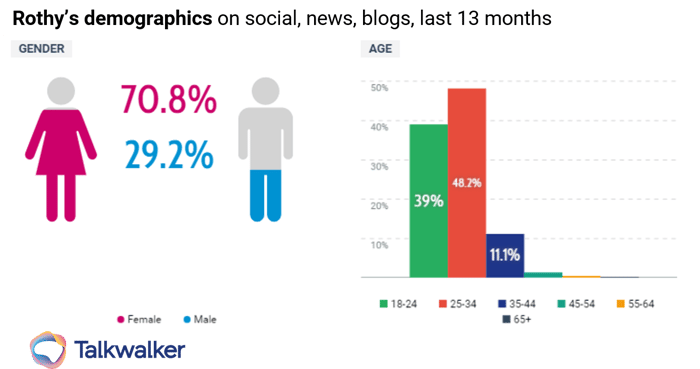
Rothy’s audience on social media is fueled by a young and female crowd, active on Instagram
View this post on InstagramA post shared by Rothy's (@rothys) on
50 million plastic bottles recycled and turned into fashionable flats for Millennials
Handwritten message from the Founder to the Facebook fanbase - a direct emotional call to core customers and brand ambassadors
Rothy’s announcing that they now also offer handbags
Key learnings
- Make things look homemade and personal - especially your brand messaging. Be cautious with your tone of voice, be sensitive with your fonts and background colors, try to trigger emotions and look true and authentic
- Your story needs to fit your audience - Rothy’s eco-sensitive female West Coast clientele was desperate for fashionable & convenient flats that reduce plastic waste on their favorite outdoor spot - beaches. A winning approach that resonates with its specific audience.

